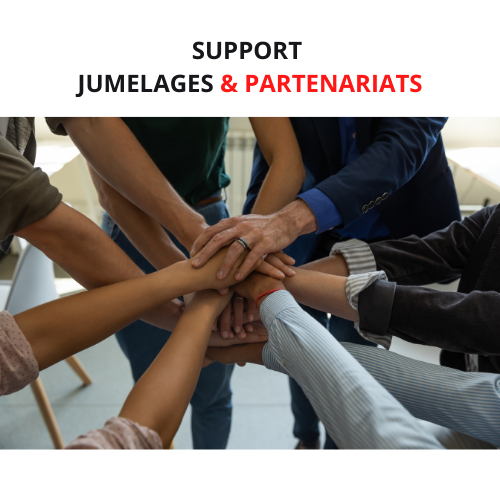Burkina Faso/3rd edition of the photography trek: The spotlight will soon be on Burkina Faso's cultural and tourist heritage
Photos'Or BF, Burkina's photographic trek, has established itself as a major cultural event promoting the country's heritage. On the eve of its third edition, scheduled for August 2025, its promoter Dieudonné Ouoba, aka "DTO Pictures", takes us behind the scenes of this visual adventure, with its challenges, innovations and ambitions, with one watchword: to immortalize Burkina Faso's rich cultural, tourist and hotel heritage through the lens.
Lefaso.net: How did you come up with the idea of organizing the Burkina Photographic Tour?
Dieudonné Ouoba: The idea came from a desire to set up an image bank of our cultural, tourist and hotel heritage. I realized that I couldn't do it alone. I needed to put together a team to go out into the field and capture images from a variety of photographic perspectives, so as to appreciate the diversity of the shots that would be selected. The aim was not only to create this image bank, but also to support the communications and computer graphics sector. Indeed, most of the visuals used in France are images from other countries. Yet we have the opportunity to produce these images ourselves, and it was this ambition that led us to conceive of this event.
What's new this year?
For this edition, we've introduced a training session for photography enthusiasts, as well as a masterclass for professionals. During the second edition, we had already hoped to organize an evening of recognition for pioneers of photography who had distinguished themselves in several fields. We were unable to bring this project to fruition, but we're doing it again this year. It will be a first to see photographers organize such an evening in honor of their elders and predecessors.
Among other innovations, last year we took part in the Salon international du tourisme et de l'hôtellerie de Ouagadougou (SITHO), a first for photography.
We presented our photographic heritage, which we were able to immortalize. It was a real success, and we intend to take part again this year to showcase our physical and animated images, which will be on screen to attract even more attention. These are innovations introduced last year that we hope to continue. What's more, this year we're integrating the Museum of Photography, where we'll have the opportunity to discover old cameras. It's a colossal program ahead of us, but we're convinced we can pull it off.
Has a route been defined for this tour?
Yes, the route includes the Thomas Sankara Memorial and the Maison du Peuple, which is also a great cultural heritage site. From there, we'll continue on to the Georges Ouédraogo Music Museum and the Army Museum. We'll then head up to Saponé for an immersion in the world of the Saponé hat. On the way back, we'll pass by the Nubian vault site at Koubri to showcase the local hotel industry. That's the main tour, but we'll also be visiting other tourist sites along the way.
How many participants are you expecting?
We're expecting around 60 people. Last year, we had this number of participants, and we're aiming for about the same. That said, with the registrations we've already received, we're already over sixty. I'm giving a minimum estimate, but if there are more people, we'll try to adapt.
And what's the typical profile of participants?
The typical profile is that of a photo enthusiast, whether professional or amateur. The photographic eye differs from one person to another, and an amateur may have a better angle of view than a professional. It all depends on how the image is presented. We focus on the work of professionals, because the aim is to sell the image of our heritage, but the event is open to all.
If I'm a photography enthusiast but only have a smartphone, am I eligible?
Absolutely. You can make beautiful images with a smartphone. The quality may not be the same as that of a high-performance professional camera, but smartphones are welcome. And it's not just photography; it's also video to enhance and sell the image. Imagine the impact of 60 photographers going out into the field and broadcasting their images on their platforms. This creates an important dynamic. It's very rare to see a team of photographers working as a network on a tourist site, apart from reporting or commissioned activities.
Have you already set a date and theme for this year's event?
The chosen period is August. All activities will take place during the first two weeks. Training will take place the week of August 9, the hike itself is scheduled for August 15, and the recognition evening will be held on August 19, which coincides with World Photography Day.
How do you finance this activity? Are you using your own funds or do you have partners?
So far, partners have been few and far between. We do have a few strategic partners, such as Faso Tourisme, which is helping us with mobility by providing us with a bus, even though we have to cover the ancillary costs. Apart from Faso Tourisme, we've asked the Ministry for support, and we're waiting to see what the results will be. We've also received a little support from the Bureau burkinabè du Droit d'Auteur (BBDA).
For the exhibition we're planning, we have to pay the rights to the artists, and the BBDA has made things easier for us in this respect. We've also invited them to come and talk to the photographers, as many of them are not yet members, and this would be a great opportunity for them to discover the BBDA. So it's mainly our structure that tries to manage the event's budget. We invite any partner or sponsor who would like to join us to do so, so that together we can enhance our heritage.
Apart from the financial aspect, do you face any other organizational challenges?
Apart from the budget, the press is to be commended. Since the first event, a number of media outlets have understood the project and have supported us graciously. We really want to thank them, because without their support, we wouldn't be where we are today. We would like to reiterate our request for their help in distributing the communication materials for this new edition.
We're also keen to hear from anyone who can provide accommodation or welcome our colleagues from other towns. Last year, we had participants from Bobo-Dioulasso, Kaya, Dori, and even expatriates from Niger and Mali. We had to accommodate them and manage their mobility. Participation is free, but the costs are high, if only to print the works for the exhibition. If a printing company offered to print the photos for us, that would be great.
So, as I understand it, some of the photos taken during the hike will be exhibited?
Yes, that's the idea. If we have 60 photos, we'll select the best ones, the ones that speak for themselves and convey a strong message. Ideally, we'd like to exhibit at least one photo per photographer. But given the cost of the prints, which are large formats (70x80 cm), that's a colossal budget. It would be difficult to ask each photographer to print his or her own photo.
How do you see this event evolving in the years to come?
We see this event as a very promising way of promoting our heritage. The first two editions have already led to some wonderful discoveries. Many participants were unfamiliar with certain sites, such as the Musée de l'Eau. In fact, its promoter is very proud of the many visitors he has received since our visit. The same goes for the "Kolgondiessé" Women's Museum. We really try to identify little-known sites and bring them to light.
What message would you like to send to young photographers or those who want to make photography their profession?
My message is to tell them to persevere despite the difficulties. We mustn't put economic resources at the center of everything. Of course, you need the means to acquire equipment, but it's not always the immediate economic gain that brings recognition or enhances talent. A photo taken today can be very useful two or three years later.
I also encourage them not to focus solely on event photography. There are many other possibilities, such as documentary or artistic photography, which are growth sectors. Finally, I encourage them to continue their training. We ourselves continue to learn from our elders, we continue to read. We never stop learning.
Source: lefaso.net/


